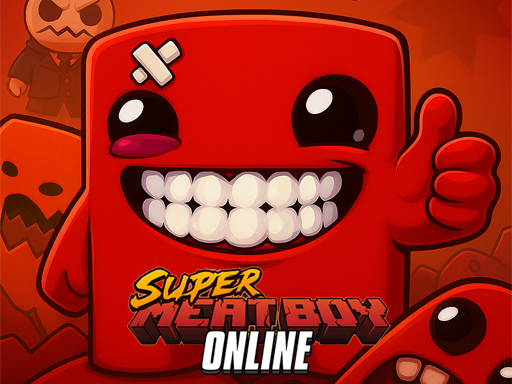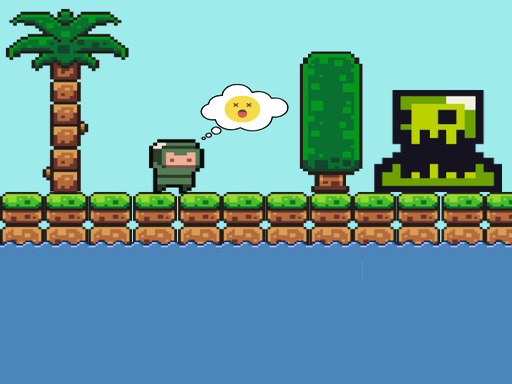Forge Master 3D
About Forge Master 3D
Okay, so you know that feeling, right? That constant hunt for that next game, the one that just *clicks*? Especially in the hypercasual space, where so many titles promise quick fun but often just… fall flat. You scroll, you download, you play for five minutes, and then it’s uninstalled, forgotten. It’s a jungle out there, full of clones and fleeting distractions. But then, every now and then, you stumble upon something truly special, something that genuinely surprises you, and you just *have* to tell everyone about it. That’s exactly how I felt when I discovered Forge Master 3D. Seriously, it’s not just another time-killer; it’s an experience, a little gem that just absolutely nails what it sets out to do.
I mean, honestly, when I first saw the screenshots, I thought, "Okay, another crafting game, probably tap-tap-tap and done." But there's something magical about how Forge Master 3D draws you in, something that elevates it way beyond what you'd expect from a hypercasual title. It’s got this incredible tactile satisfaction, this genuine sense of creation that I haven't felt in a mobile game in ages. You don't just *play* this game; you actually *feel* like you're becoming a legendary blacksmith, and that's a pretty wild thing to say about a game you can pick up and put down in two minutes.
The premise is simple, almost deceptively so. You're a blacksmith, and you're challenged by an opponent. Not a grand, epic quest, just a straightforward "my sword is better than your sword" kind of vibe. But that simplicity is where the genius lies. It immediately sets a clear goal, a purpose for your forging. You're not just making a random sword; you're crafting a weapon with a specific destiny, a blade that will soon face off against another. That little bit of context, that competitive spark, makes all the difference. It transforms what could be a mundane crafting process into a focused, almost meditative preparation for battle.
The moment you step into that fiery forge, you can almost feel the heat radiating from the glowing coals. The visuals are crisp, the colors vibrant, and there’s a real sense of atmosphere. You're presented with your opponent, often a shadowy figure or a simple silhouette, which actually works brilliantly because it keeps the focus on *your* creation. Then comes the first big decision, and honestly, it feels weightier than it has any right to be: choosing your mold. This isn't just picking a shape; it's the very soul of your weapon. Do you go for a broad, heavy blade, suggesting brute force? Or a slender, elegant rapier, hinting at speed and precision? Each mold has its own subtle character, and you find yourself really considering the implications, even if it's just a visual preference at first. What's fascinating is how quickly you develop a connection to these shapes, imagining the finished product before you've even touched the raw metal.
Once the mold is selected, that’s when the real magic begins. You start with a raw, unformed block of metal, and it's up to you to transform it. The core of the crafting is this incredibly satisfying process of hammering. You're not just tapping a button; you're guiding a hammer, shaping the metal with a series of precise, rhythmic movements. The game gives you this wonderful visual feedback – the metal glows brighter as you hit it, sparks fly, and you see the blade slowly, almost organically, taking shape under your virtual blows. There’s a distinct *thwack* sound with each strike, a sound that quickly becomes incredibly addictive. You find yourself falling into a rhythm, feeling the weight of each strike, aiming for those perfect sweet spots on the glowing metal. It’s a dance, really, between the heat of the forge and the force of your hammer, transforming something inert into something powerful. The tension in your shoulders might even subtly increase as you try to perfectly align each strike, knowing that every hit contributes to the final form and, ultimately, the strength of your sword.
And just when you think you've got the hammering down, the game introduces the next crucial step: tempering. This is where the blade truly comes to life, where its resilience and sharpness are forged. You have to carefully guide your blade through the flames, holding it in just the right spot, watching for the metal to reach that perfect, glowing orange. It’s a delicate balance; too long, and you risk overheating and weakening it; too short, and it won't be properly tempered. There’s a visual indicator, of course, but there’s also this intuitive feel you develop, this sense of knowing when it’s just right. The way the light plays off the metal as it heats, the subtle changes in its hue – it’s genuinely captivating. You can almost feel the heat radiating from the screen, the crackle of the fire in your ears. This phase is less about brute force and more about finesse, a moment of calm precision after the energetic hammering. It’s about coaxing the metal to its optimal state, preparing it for the trials ahead.
Once the tempering is complete, you’ve got a raw, powerful blade, but it’s not quite ready. This is where the "serious polishing" comes in, and honestly, this part is pure genius. It’s not just a cosmetic step; it directly impacts your sword's damage value. You take your newly forged blade and, using a polishing wheel, you meticulously buff it to a gleaming finish. You swipe and rub, watching the dull, smoky surface transform into a mirror-like sheen. Each stroke feels like it’s adding a layer of power, a subtle boost to its lethality. There’s a satisfying visual sparkle as the blade gets shinier, and a little counter ticks up, showing your damage value increasing. This is the moment where all your hard work, all that hammering and tempering, culminates in a tangible number, a quantifiable improvement. It’s incredibly rewarding, that feeling of taking something raw and making it perfect, knowing that every bit of effort translates directly into a stronger weapon. It’s the ultimate expression of craftsmanship in a hypercasual package.
And then, the moment of truth. Your sword is complete, gleaming and ready. It’s time to test it against your opponent. The game transitions smoothly to a quick, satisfying combat sequence. Your sword, the one you just painstakingly crafted, clashes against your rival's. You see the damage numbers fly, the impact, the effectiveness of your creation. There’s a real thrill in watching your handiwork perform, in seeing that high damage value you polished so carefully translate into a decisive victory. And when you win, that feeling of accomplishment? It’s immense. You crafted that blade. You hammered it, tempered it, polished it. You *earned* that win. And even if you lose, it’s not frustrating; it just makes you want to jump right back into the forge, determined to craft an even *better* sword next time. You start thinking, "Maybe I should have chosen a different mold," or "I could have polished it just a little bit more." The cycle of improvement is immediately compelling.
What I love about games like this is how they manage to distill a complex, satisfying experience into bite-sized chunks. Forge Master 3D doesn't waste your time with unnecessary complexity. It focuses on the core loop of creation, refinement, and testing, and it executes it flawlessly. There’s a genuine sense of progression, even if it’s just unlocking new molds or seeing your damage values steadily climb. It’s the kind of game you pick up for "just one more sword," and suddenly an hour has passed. The brilliant thing about this is how it taps into that primal human satisfaction of making something with your own hands, of seeing your effort manifest into a tangible, powerful object.
In my experience, the best moments come when you really start to feel that rhythm, that flow state where you’re just in sync with the game. The clang of the hammer, the hiss of the tempering flames, the satisfying *shink* as the polishing wheel buffs your blade – it all comes together to create this incredibly immersive, almost meditative experience. It’s a testament to clever game design, taking a simple concept and infusing it with so much tactile feedback and emotional payoff. It’s genuinely surprising how much depth and satisfaction they’ve managed to pack into what is, at its heart, a hypercasual game. You find yourself genuinely curious about what the next challenge will bring, what new mold you might unlock, or how much higher you can push that damage value. It’s that constant pull, that desire for mastery, that makes it so utterly addictive.
So yeah, if you're looking for something that's more than just a quick distraction, something that genuinely sparks that creative, competitive fire in you, you absolutely have to check out Forge Master 3D. It’s not just a game; it’s an invitation to become a master craftsman, to feel the heat of the forge, and to wield the power of your own creation. Trust me, you'll be hooked from your very first swing of the hammer. It’s the kind of discovery that makes all those other quick-delete games worth sifting through. It’s truly something special.
I mean, honestly, when I first saw the screenshots, I thought, "Okay, another crafting game, probably tap-tap-tap and done." But there's something magical about how Forge Master 3D draws you in, something that elevates it way beyond what you'd expect from a hypercasual title. It’s got this incredible tactile satisfaction, this genuine sense of creation that I haven't felt in a mobile game in ages. You don't just *play* this game; you actually *feel* like you're becoming a legendary blacksmith, and that's a pretty wild thing to say about a game you can pick up and put down in two minutes.
The premise is simple, almost deceptively so. You're a blacksmith, and you're challenged by an opponent. Not a grand, epic quest, just a straightforward "my sword is better than your sword" kind of vibe. But that simplicity is where the genius lies. It immediately sets a clear goal, a purpose for your forging. You're not just making a random sword; you're crafting a weapon with a specific destiny, a blade that will soon face off against another. That little bit of context, that competitive spark, makes all the difference. It transforms what could be a mundane crafting process into a focused, almost meditative preparation for battle.
The moment you step into that fiery forge, you can almost feel the heat radiating from the glowing coals. The visuals are crisp, the colors vibrant, and there’s a real sense of atmosphere. You're presented with your opponent, often a shadowy figure or a simple silhouette, which actually works brilliantly because it keeps the focus on *your* creation. Then comes the first big decision, and honestly, it feels weightier than it has any right to be: choosing your mold. This isn't just picking a shape; it's the very soul of your weapon. Do you go for a broad, heavy blade, suggesting brute force? Or a slender, elegant rapier, hinting at speed and precision? Each mold has its own subtle character, and you find yourself really considering the implications, even if it's just a visual preference at first. What's fascinating is how quickly you develop a connection to these shapes, imagining the finished product before you've even touched the raw metal.
Once the mold is selected, that’s when the real magic begins. You start with a raw, unformed block of metal, and it's up to you to transform it. The core of the crafting is this incredibly satisfying process of hammering. You're not just tapping a button; you're guiding a hammer, shaping the metal with a series of precise, rhythmic movements. The game gives you this wonderful visual feedback – the metal glows brighter as you hit it, sparks fly, and you see the blade slowly, almost organically, taking shape under your virtual blows. There’s a distinct *thwack* sound with each strike, a sound that quickly becomes incredibly addictive. You find yourself falling into a rhythm, feeling the weight of each strike, aiming for those perfect sweet spots on the glowing metal. It’s a dance, really, between the heat of the forge and the force of your hammer, transforming something inert into something powerful. The tension in your shoulders might even subtly increase as you try to perfectly align each strike, knowing that every hit contributes to the final form and, ultimately, the strength of your sword.
And just when you think you've got the hammering down, the game introduces the next crucial step: tempering. This is where the blade truly comes to life, where its resilience and sharpness are forged. You have to carefully guide your blade through the flames, holding it in just the right spot, watching for the metal to reach that perfect, glowing orange. It’s a delicate balance; too long, and you risk overheating and weakening it; too short, and it won't be properly tempered. There’s a visual indicator, of course, but there’s also this intuitive feel you develop, this sense of knowing when it’s just right. The way the light plays off the metal as it heats, the subtle changes in its hue – it’s genuinely captivating. You can almost feel the heat radiating from the screen, the crackle of the fire in your ears. This phase is less about brute force and more about finesse, a moment of calm precision after the energetic hammering. It’s about coaxing the metal to its optimal state, preparing it for the trials ahead.
Once the tempering is complete, you’ve got a raw, powerful blade, but it’s not quite ready. This is where the "serious polishing" comes in, and honestly, this part is pure genius. It’s not just a cosmetic step; it directly impacts your sword's damage value. You take your newly forged blade and, using a polishing wheel, you meticulously buff it to a gleaming finish. You swipe and rub, watching the dull, smoky surface transform into a mirror-like sheen. Each stroke feels like it’s adding a layer of power, a subtle boost to its lethality. There’s a satisfying visual sparkle as the blade gets shinier, and a little counter ticks up, showing your damage value increasing. This is the moment where all your hard work, all that hammering and tempering, culminates in a tangible number, a quantifiable improvement. It’s incredibly rewarding, that feeling of taking something raw and making it perfect, knowing that every bit of effort translates directly into a stronger weapon. It’s the ultimate expression of craftsmanship in a hypercasual package.
And then, the moment of truth. Your sword is complete, gleaming and ready. It’s time to test it against your opponent. The game transitions smoothly to a quick, satisfying combat sequence. Your sword, the one you just painstakingly crafted, clashes against your rival's. You see the damage numbers fly, the impact, the effectiveness of your creation. There’s a real thrill in watching your handiwork perform, in seeing that high damage value you polished so carefully translate into a decisive victory. And when you win, that feeling of accomplishment? It’s immense. You crafted that blade. You hammered it, tempered it, polished it. You *earned* that win. And even if you lose, it’s not frustrating; it just makes you want to jump right back into the forge, determined to craft an even *better* sword next time. You start thinking, "Maybe I should have chosen a different mold," or "I could have polished it just a little bit more." The cycle of improvement is immediately compelling.
What I love about games like this is how they manage to distill a complex, satisfying experience into bite-sized chunks. Forge Master 3D doesn't waste your time with unnecessary complexity. It focuses on the core loop of creation, refinement, and testing, and it executes it flawlessly. There’s a genuine sense of progression, even if it’s just unlocking new molds or seeing your damage values steadily climb. It’s the kind of game you pick up for "just one more sword," and suddenly an hour has passed. The brilliant thing about this is how it taps into that primal human satisfaction of making something with your own hands, of seeing your effort manifest into a tangible, powerful object.
In my experience, the best moments come when you really start to feel that rhythm, that flow state where you’re just in sync with the game. The clang of the hammer, the hiss of the tempering flames, the satisfying *shink* as the polishing wheel buffs your blade – it all comes together to create this incredibly immersive, almost meditative experience. It’s a testament to clever game design, taking a simple concept and infusing it with so much tactile feedback and emotional payoff. It’s genuinely surprising how much depth and satisfaction they’ve managed to pack into what is, at its heart, a hypercasual game. You find yourself genuinely curious about what the next challenge will bring, what new mold you might unlock, or how much higher you can push that damage value. It’s that constant pull, that desire for mastery, that makes it so utterly addictive.
So yeah, if you're looking for something that's more than just a quick distraction, something that genuinely sparks that creative, competitive fire in you, you absolutely have to check out Forge Master 3D. It’s not just a game; it’s an invitation to become a master craftsman, to feel the heat of the forge, and to wield the power of your own creation. Trust me, you'll be hooked from your very first swing of the hammer. It’s the kind of discovery that makes all those other quick-delete games worth sifting through. It’s truly something special.
Enjoy playing Forge Master 3D online for free on Viralexclusivo Games. This Arcade game offers amazing gameplay and stunning graphics. No downloads required, play directly in your browser!
How to Play
Mouse click or tap to play





Comments
This game is awesome! I love the graphics and gameplay.
One of the best games I've played recently. Highly recommended!